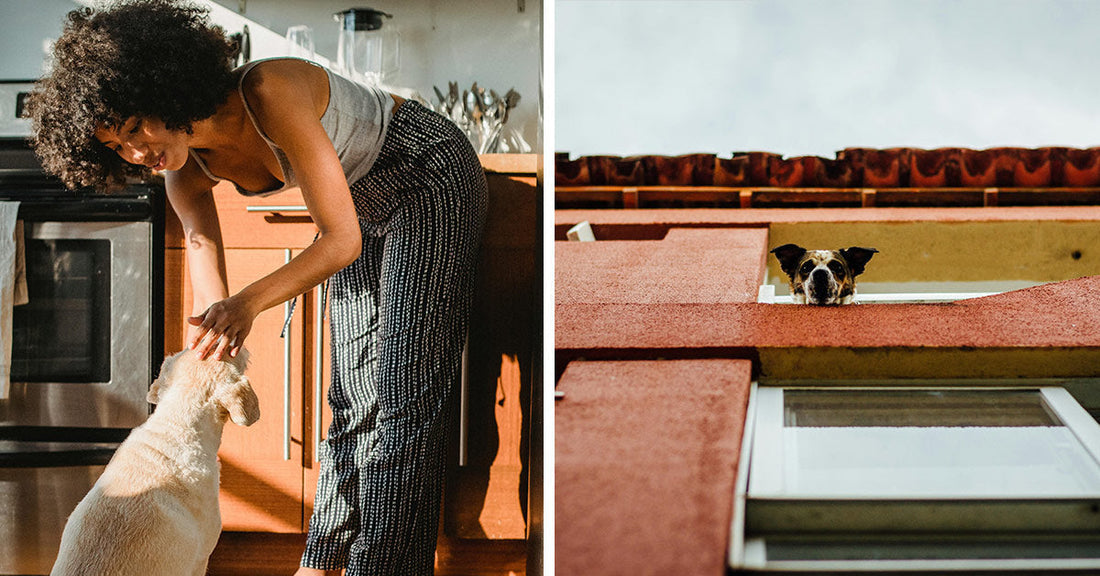Got A Canine 'Shadow'? Clingy Dogs May Be Showing Signs of Deeper Trouble
Matthew Russell
It’s a familiar sight for many dog owners—a four-legged shadow trailing from room to room, waiting patiently at the bathroom door, or curling up just inches away in every space you occupy. But why do dogs do this?
For starters, it’s often a simple expression of affection. As Martha Stewart reports, dogs form strong bonds with their caregivers and instinctively stay close.
This closeness isn’t just emotional; it’s also hormonal. When dogs interact with people they trust, oxytocin—the “love hormone”—is released, according to The Kennel Club.

Dogs follow people they trust and feel bonded to.
They Learn What Works
Dogs are astute learners. If following you has led to treats, belly rubs, or verbal affection in the past, they'll remember. This pattern becomes reinforced over time.
Pet trainer Kim Wegel explained to Rover that owners often accidentally reward clingy behavior by giving attention when the dog follows them. Even a nibble of cheese from the fridge can be enough to solidify the habit.
This behavior can be especially strong in breeds known for being “Velcro dogs”—Labrador Retrievers, Chihuahuas, and French Bulldogs, to name a few. These dogs were bred to be close companions or workers who took cues from human handlers, as noted by VHA Vets.

Constant following can signal boredom or lack of stimulation.
They’re Reading You
Your dog might also be following you out of curiosity. Dogs pay attention to your routines and body language, often anticipating meals, walks, or a game of fetch. As PetMD explains, dogs observe us to learn what comes next. They may simply want to be part of the action—or make sure you don’t forget about dinner.
Comfort in Your Presence
For rescue dogs or those with anxiety, following their person provides comfort. This is particularly common in dogs that have recently experienced change, such as a new home or a loss.
“Some dogs imprint on their caregiver during early development,” dog trainer Darris Cooper told Martha Stewart.
Older dogs may also become more attached as they age. According to PetMD, senior dogs sometimes follow their humans more closely if they are developing cognitive issues or losing sensory capabilities.

Clinginess often begins when a dog is rewarded for staying close.
They Might Need Something
Sometimes, following is practical. Your dog might be trying to get a message across—maybe they need water, want to go outside, or aren’t feeling well.
If your dog is unusually clingy, The Kennel Club recommends following them back to see what they want. Behavioral changes like this shouldn’t be ignored.
Is It a Problem?
Not always. Many dogs follow their people without any issue. But if the behavior becomes disruptive or is tied to anxiety, it may need intervention. Separation anxiety can cause destructive behavior, excessive barking, or pacing.
“It’s similar to a human experiencing a panic attack,” Cooper told Martha Stewart.
If the behavior feels excessive or new, experts at Rover advise speaking with a veterinarian. Health issues or environmental changes may be the root cause.

Some dogs follow because they expect food or treats.
How To Help
Training and enrichment can help build your dog’s confidence. Providing puzzle toys, rotating playthings, or establishing boundaries with pet gates are all smart steps. Teaching commands like “stay” or “place” allows your dog to learn that being alone isn’t a punishment but a skill.The team at VHA Vets also suggests shifting attention away from following behavior. Instead of petting or feeding your dog when they’re at your heels, reward moments when they are calm and resting elsewhere.
And if all else fails, there’s no shame in seeking help. Whether it’s anxiety or just an overly enthusiastic shadow, a professional trainer or behaviorist can help restore balance to your shared routine.

